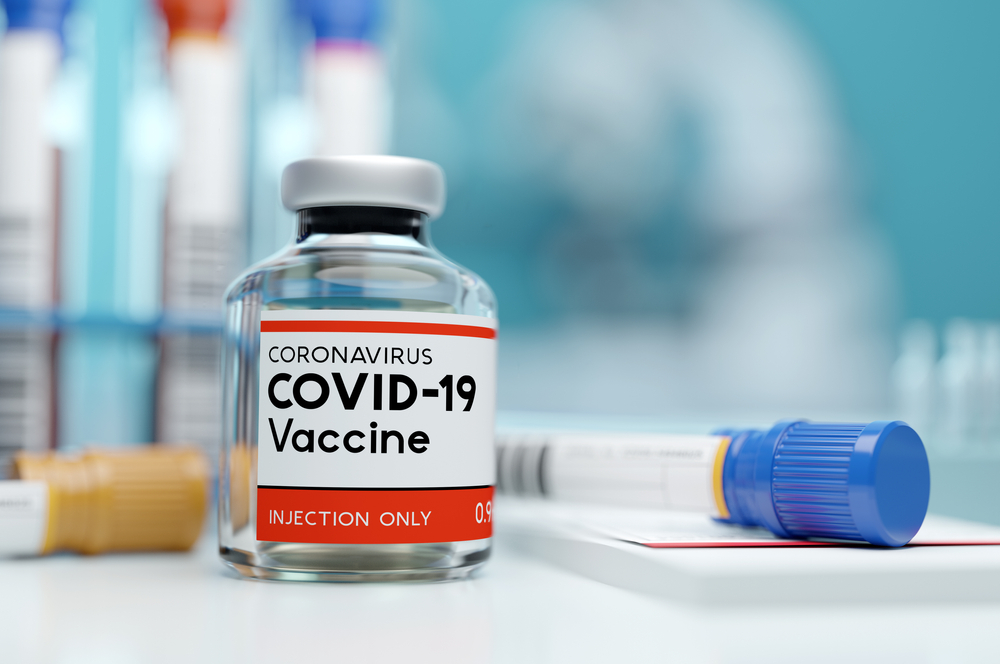While employers wait to learn the fate of a COVID-19 vaccination rule, they’re being advised to continue making plans for how to comply with the federal government’s plan aimed at stemming transmission of the virus in the workplace.
In separate hearings, the U.S. Supreme Court on January 7 heard arguments both pro and con on whether the federal Occupational Safety and Health Administration (OSHA) has the authority to impose a vaccination rule affecting private employers with at least 100 employees and another rule from the Centers for Medicare and Medicaid Services affecting healthcare workers.
OSHA’s emergency temporary standard (ETS) requires employers with at least 100 employees to require those workers to be vaccinated or submit to weekly testing. The CMS rule requires vaccination for employees of healthcare facilities that accept money from Medicare or Medicaid. The healthcare rule doesn’t allow for a testing alternative to getting the shots. Both rules allow exceptions for employees who refuse vaccination for religious or medical disability reasons.
Advice for Employers
OSHA’s ETS was issued November 4 but was quickly put on hold by a ruling from the U.S. 5th Circuit Court of Appeals. On December 17, it was cleared to take effect after a ruling from another appellate court, the 6th Circuit. Then, the Supreme Court agreed to take up the matter. The ETS is scheduled to take effect Monday (January 10), but full enforcement won’t begin until February 9.
Burton Fishman, an attorney with FortneyScott in Washington, D.C., says affected employers should, if they haven’t already done so, institute a policy and protocol for logging employees’ vaccination status and doing the other things required in the ETS by January 10. If they choose to allow the testing alternative to the shots, they’ll have until February 9 to have a testing protocol in place for unvaccinated workers.
Since the ETS is an “emergency” standard, it is just for six months, during which time OSHA is to hear comments related to issuing a permanent standard. Fishman says regardless of whether the Court rules the agency exceeded its authority with the rule, that doesn’t resolve the question of whether it can issue a normal standard.
So, Fishman advises covered employers “to keep your powder dry” since it’s now clear (1) states can issue mandates if they choose to do so and (2) regulation is likely in the vaccination area even if the ETS doesn’t survive.
Donald D. Berner, an attorney with Foulston Siefkin LLP in Wichita, Kansas, agrees employers need to “be ready to roll out a policy” on January 10. “I think most employers are likely to take the approach of vaccination or testing/masking as opposed to just mandating a vaccination,” he says. “In the case of that policy, they hopefully have been gathering vaccination data along the way and have an understanding of who is not vaccinated.”
Anyone who hasn’t provided vaccination data by January 10 needs to be treated as unvaccinated, so those workers should wear a mask at all times in the workplace, Berner says, adding employers also need to keep in mind the general duty clause of the Occupational Safety and Health Act and the COVID guidance OSHA put out last year. Under those provisions, masking may also apply to vaccinated employees.
Assuming employers allow for the testing/masking alternative to vaccination, the February 9 deadline becomes more important, Berner says. “I think the crunch is going to be driven around testing and how to accomplish it. Requiring an employee to show up with a test result they obtain is likely to be costly for employees and may result in resignations. Facilitating testing and paying the cost of the testing may be too much of a burden for employers,” he says, adding that a shortage of tests may add to the problem.
What’s Next
It isn’t known when the Supreme Court will issue a decision, but Fishman expects the justices to act “relatively quickly.” During the hearing, Justice Samuel Alito hinted the Court may decide on a brief administrative stay of the ETS while the matter is considered.
Fishman says he thinks the eventual decision may be more measured than many pundits have predicted. He says the Court seemed less focused on ideological questions and gave attention to the practical realities presented by the pandemic.
Tammy Binford writes and edits news alerts and newsletter articles on labor and employment law topics for BLR web and print publications.

